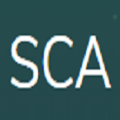Cellular connected unmanned aerial vehicle (UAV) has been identified as a promising paradigm and attracted a surge of research interest recently. Although the nearly line-of-sight (LoS) channels are favorable to receive higher powers, UAV can in turn cause severe interference to each other and to any other users in the same frequency band. In this contribution, we focus on the uplink communications of cellular-connected UAV. To cope with the severe interference among UAV-UEs, several different scheduling and power control algorithms are proposed to optimize the spectrum efficiency (SE) based on the geometrical programming (GP) principle together with the successive convex approximation (SCA) technique. The proposed schemes include maximizing the sum SE of UAVs, maximizing the minimum SE of UAVs, etc., applied in the frequency domain and/or the time domain. Moreover, the quality of service (QoS) constraint and the uplink single-carrier (SC) constraint are also considered. The performances of these power and resource allocation algorithms are evaluated via extensive simulations in both full buffer transmission mode and bursty traffic mode. Numerical results show that the proposed algorithms can effectively enhance the uplink SEs of cellular-connected UAVs.
翻译:虽然近视线(LOS)频道有利于获得更高权力,但无人驾驶飞行器可以对彼此和同一频带中的任何其他用户造成严重干扰。在这一贡献中,我们侧重于与细胞相连的无人驾驶飞行器的上链通信。为了应对无人驾驶飞行器(UAV)之间的严重干扰,还提出了几种不同的时间安排和电源控制算法,以优化基于几何制程原则的频谱效率(SE)以及相继的螺旋近光学技术。拟议的计划包括最大限度地增加无人驾驶飞行器的SE之和,最大限度地增加在频率域和(或)时域中应用的无人驾驶飞行器的最低限度SE等。此外,还考虑到服务的质量(QOS)制约和单一载波仪(SC)制约。通过全面缓冲传输模式和爆炸性交通模式的广泛模拟,对这些功率和资源配置算法的性能进行了评估。拟议的SEVA-MER结果显示,拟议的SE移动模型能够有效地增强SE的移动模式。
相关内容
- Today (iOS and OS X): widgets for the Today view of Notification Center
- Share (iOS and OS X): post content to web services or share content with others
- Actions (iOS and OS X): app extensions to view or manipulate inside another app
- Photo Editing (iOS): edit a photo or video in Apple's Photos app with extensions from a third-party apps
- Finder Sync (OS X): remote file storage in the Finder with support for Finder content annotation
- Storage Provider (iOS): an interface between files inside an app and other apps on a user's device
- Custom Keyboard (iOS): system-wide alternative keyboards
Source: iOS 8 Extensions: Apple’s Plan for a Powerful App Ecosystem




